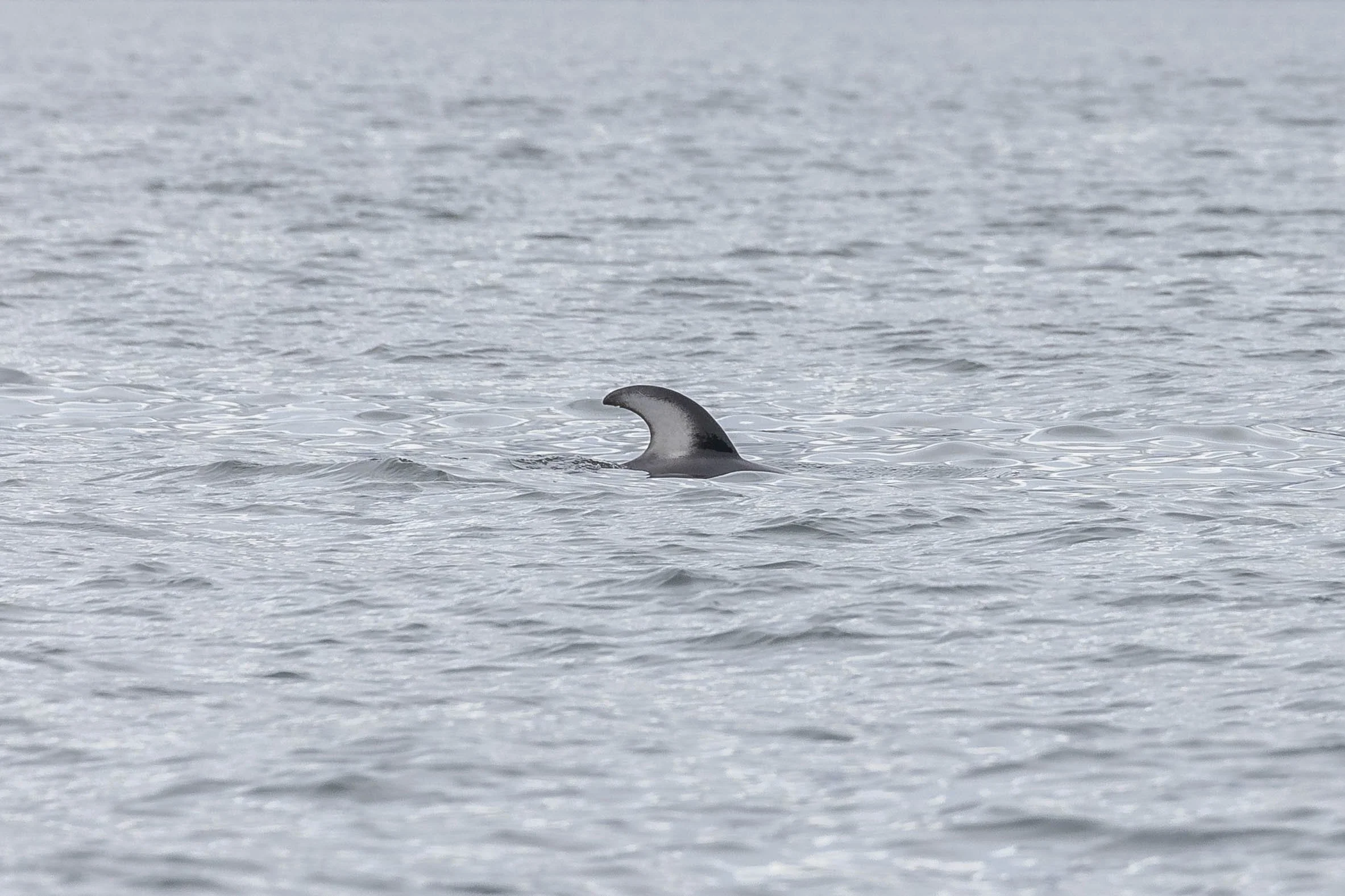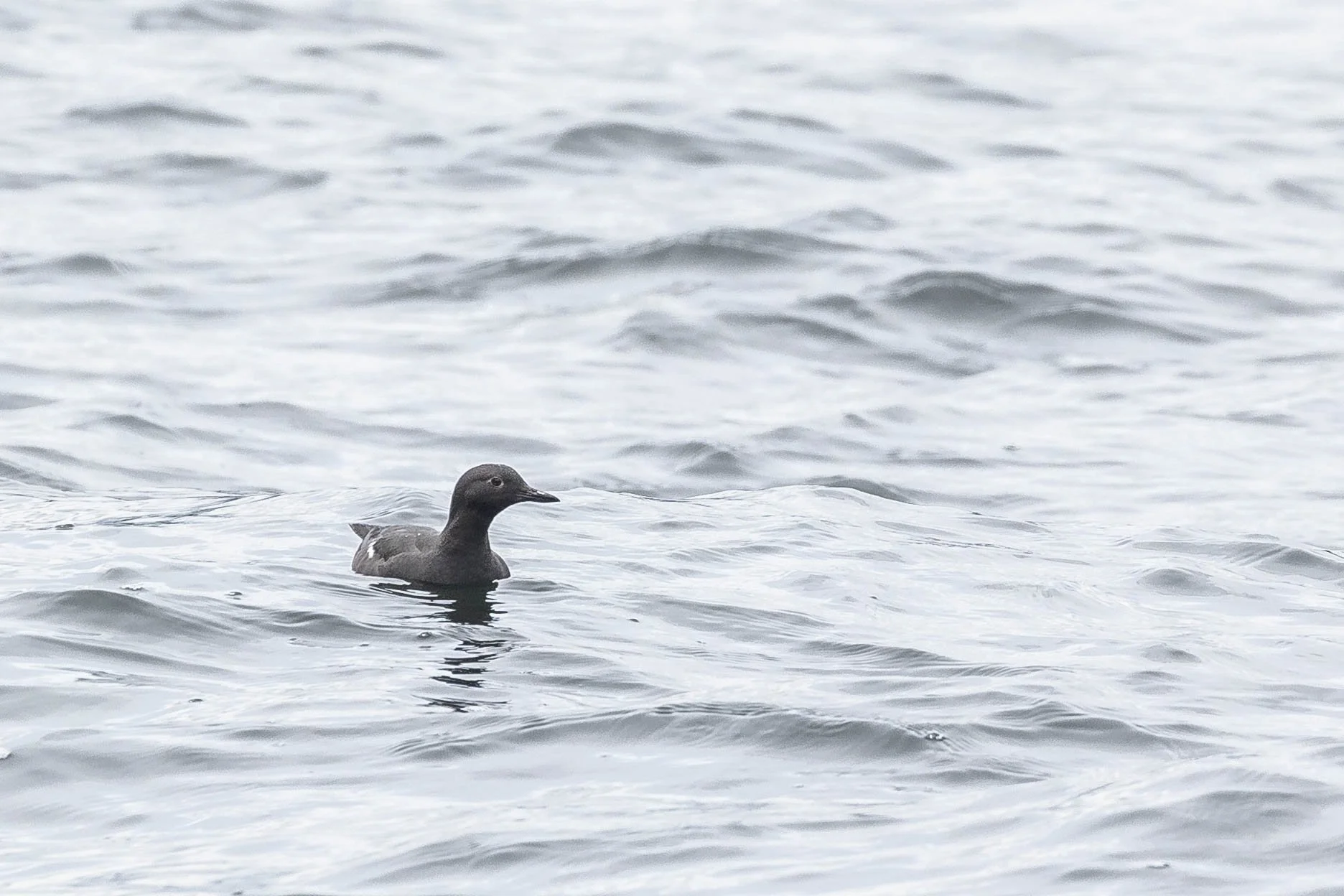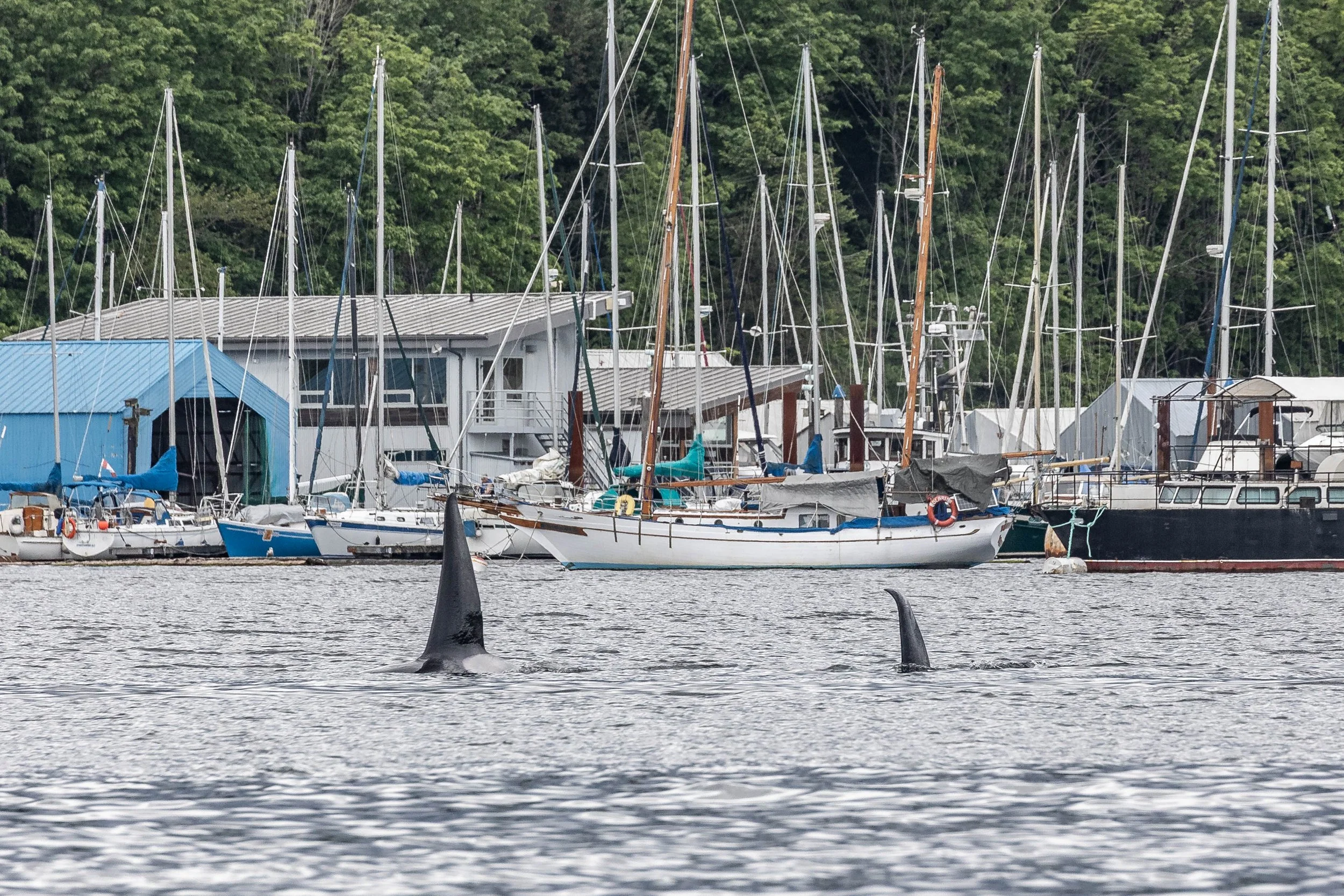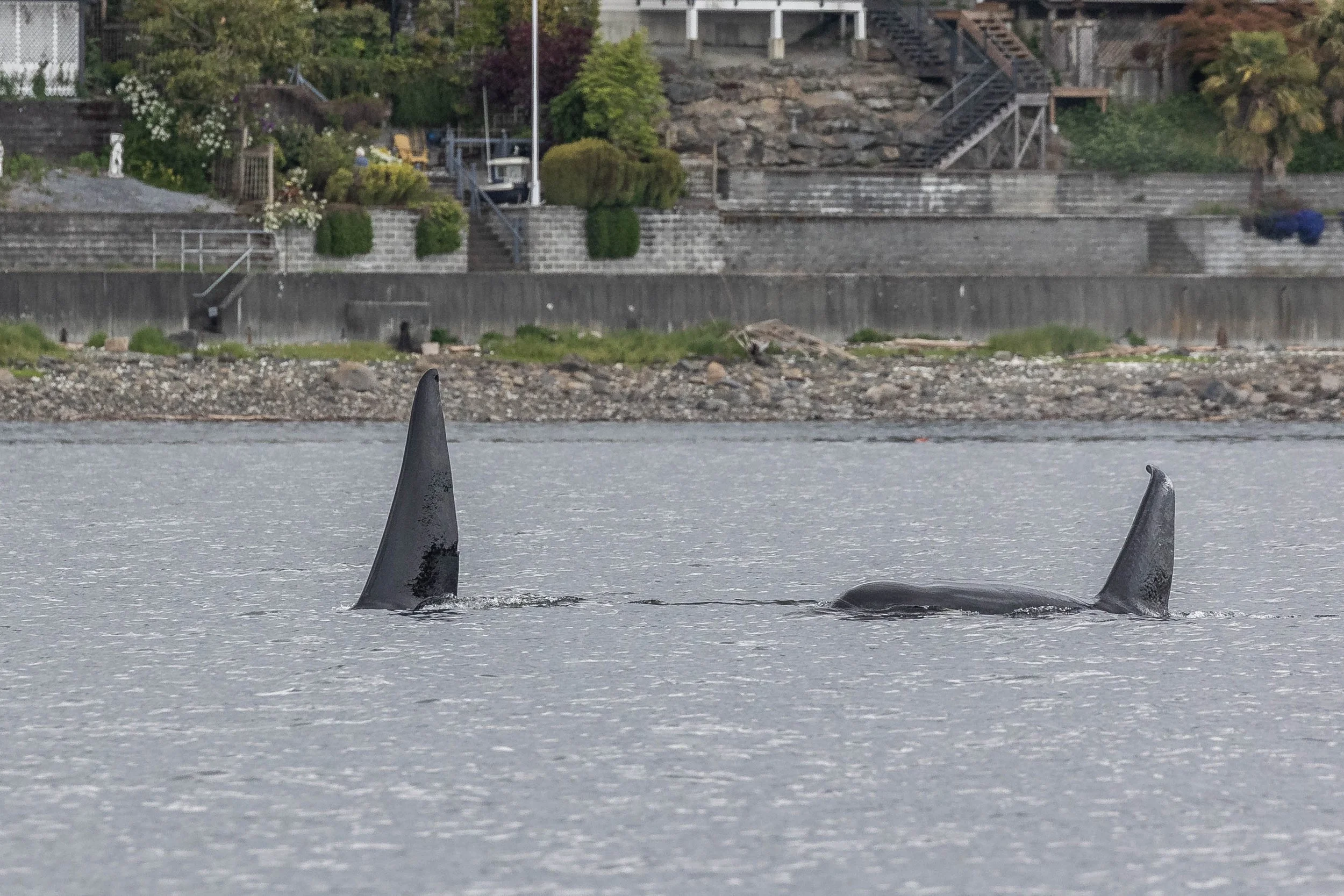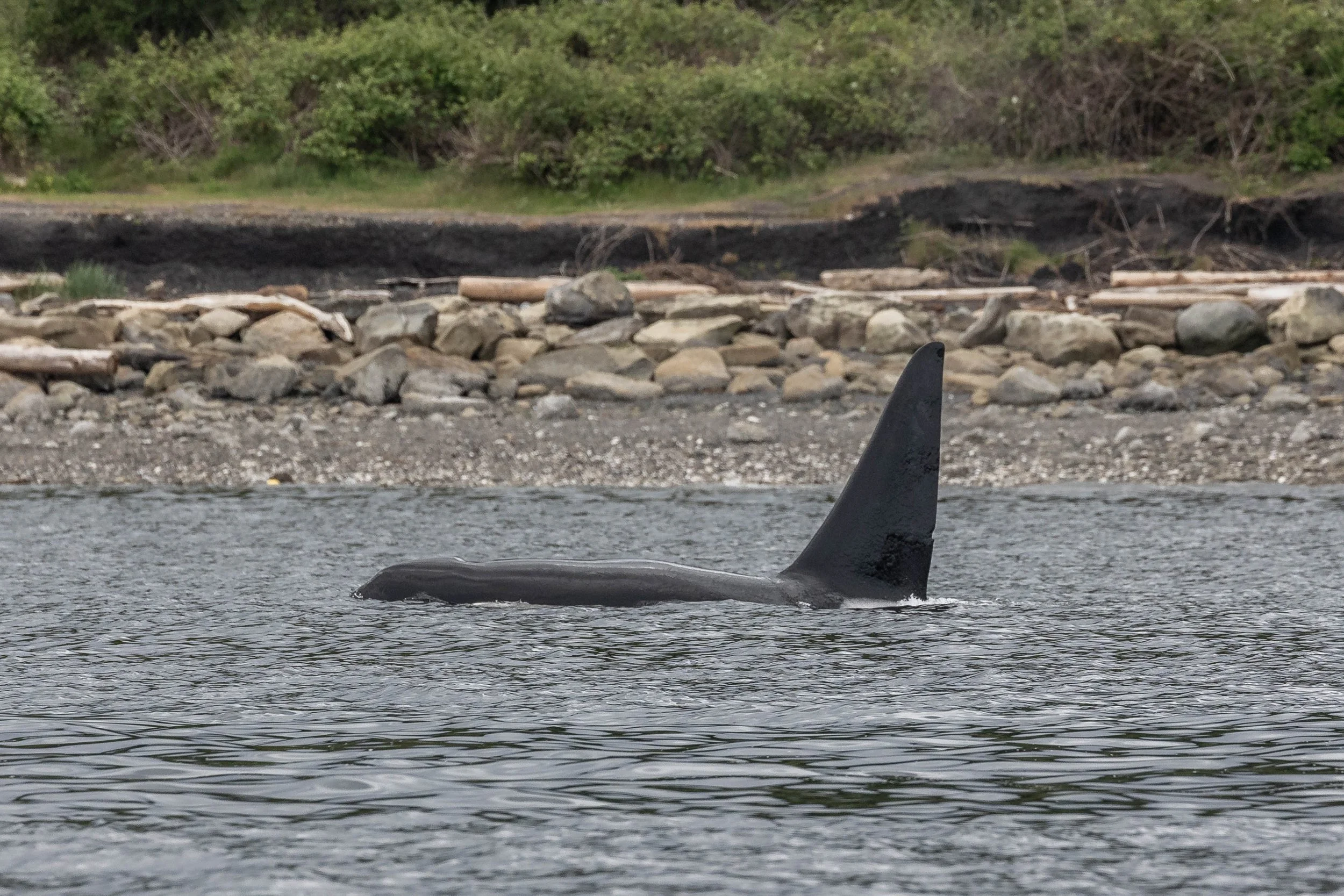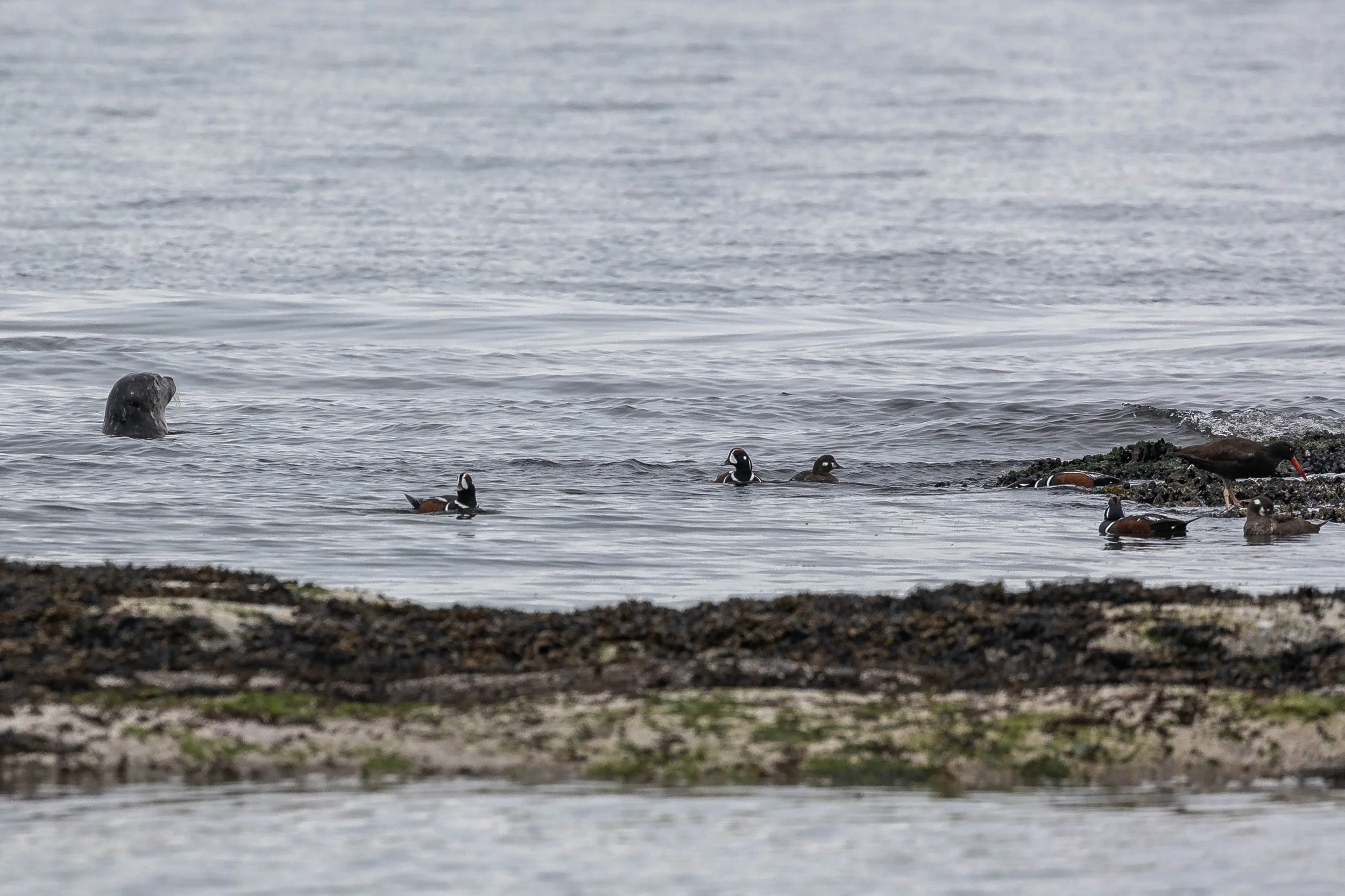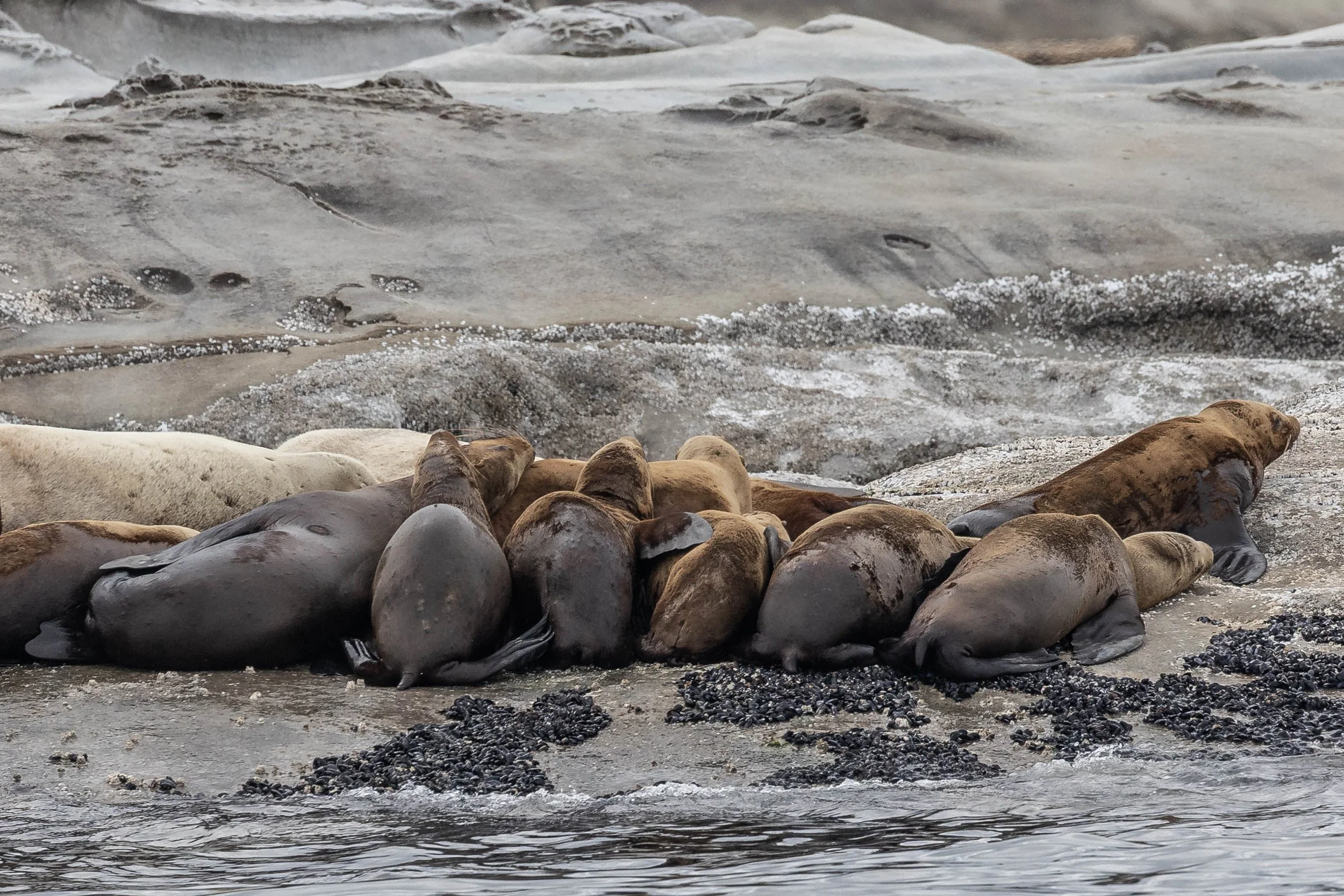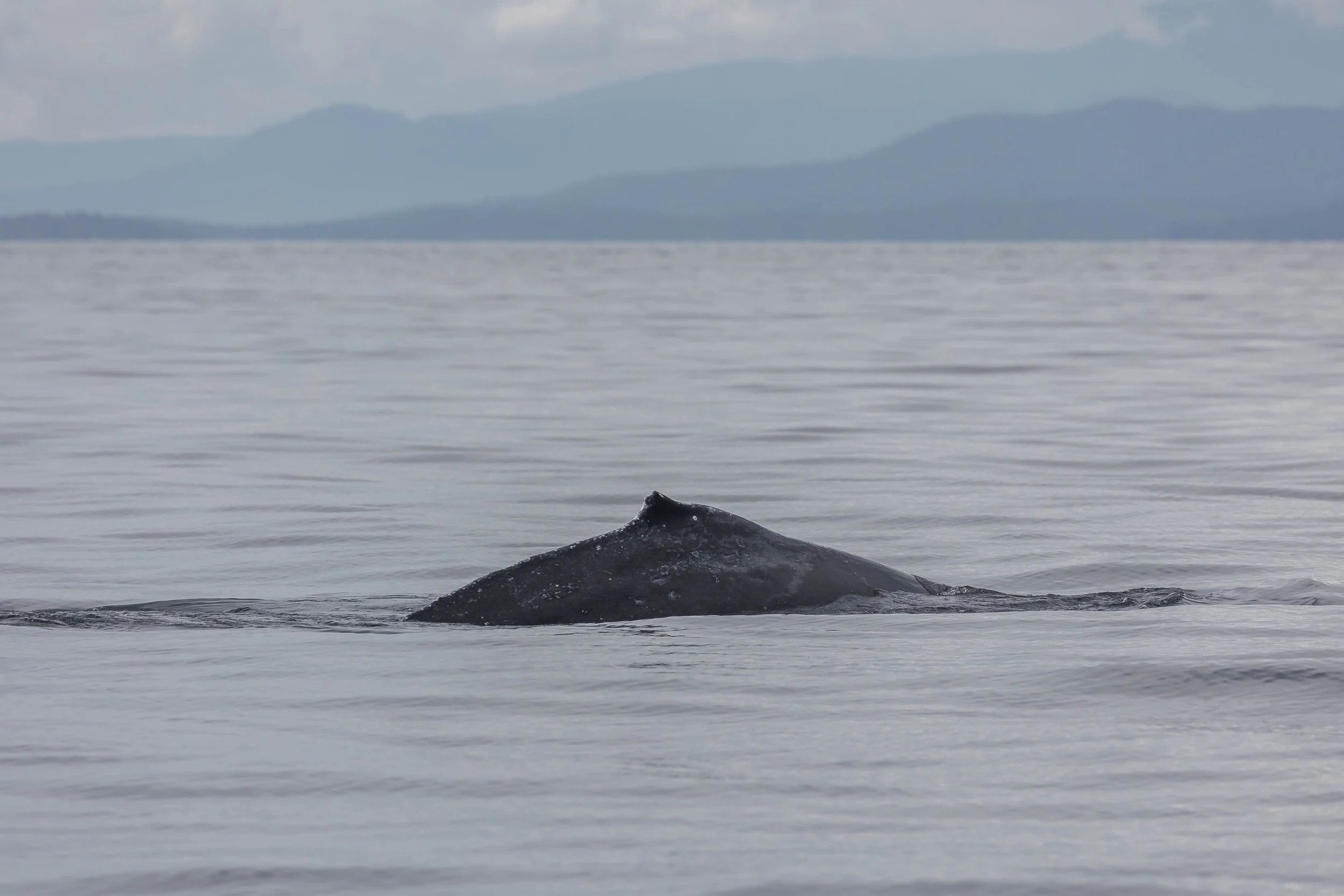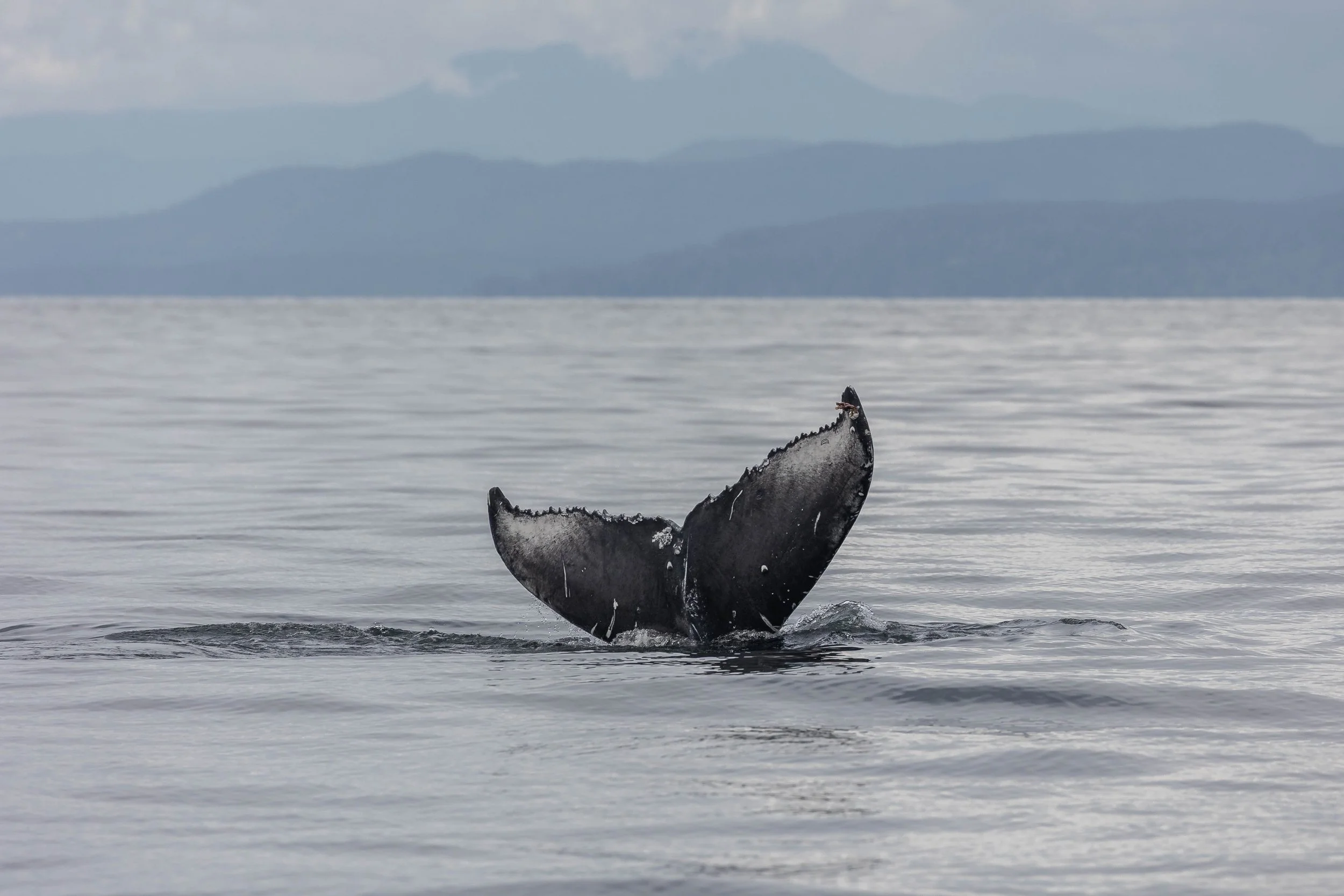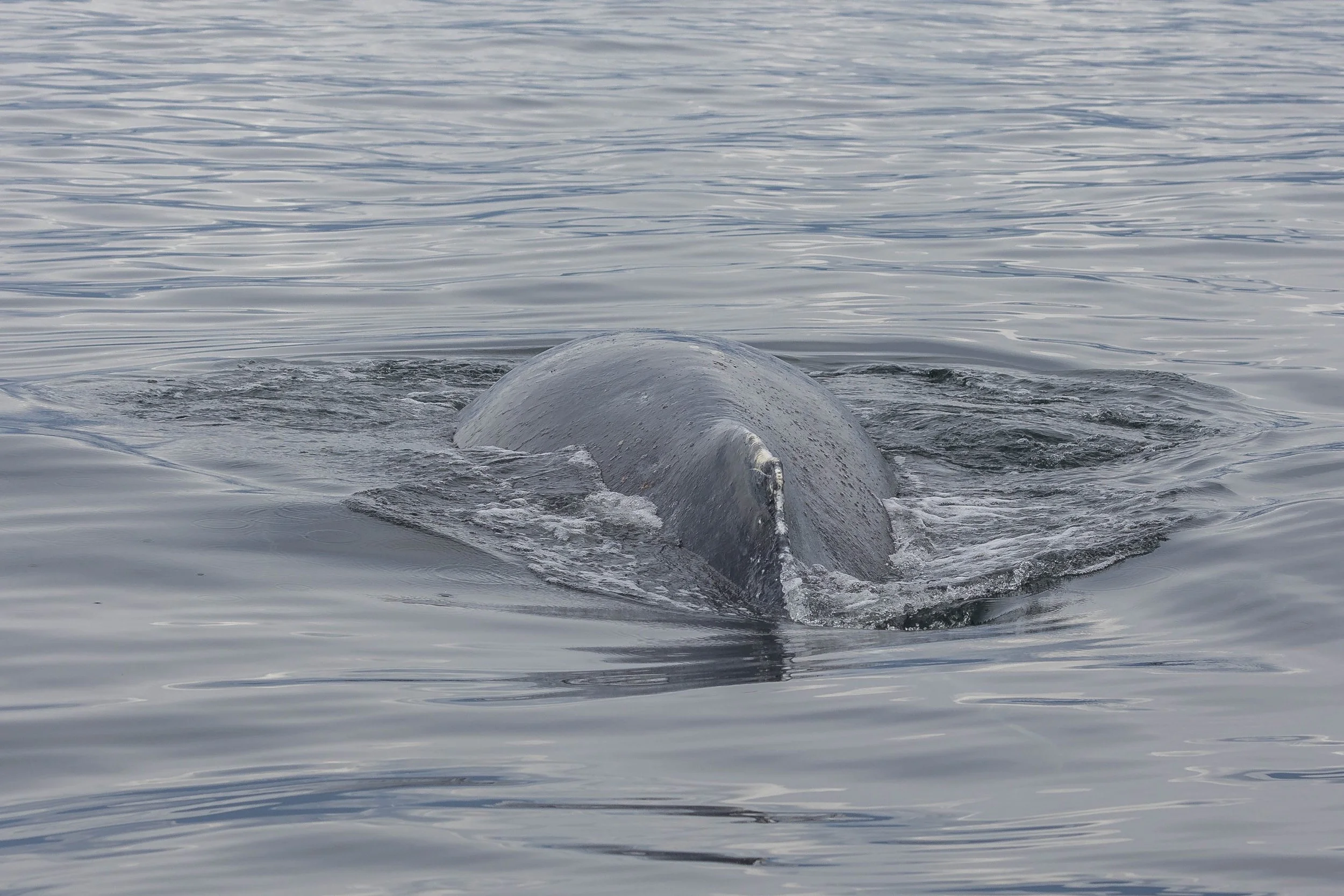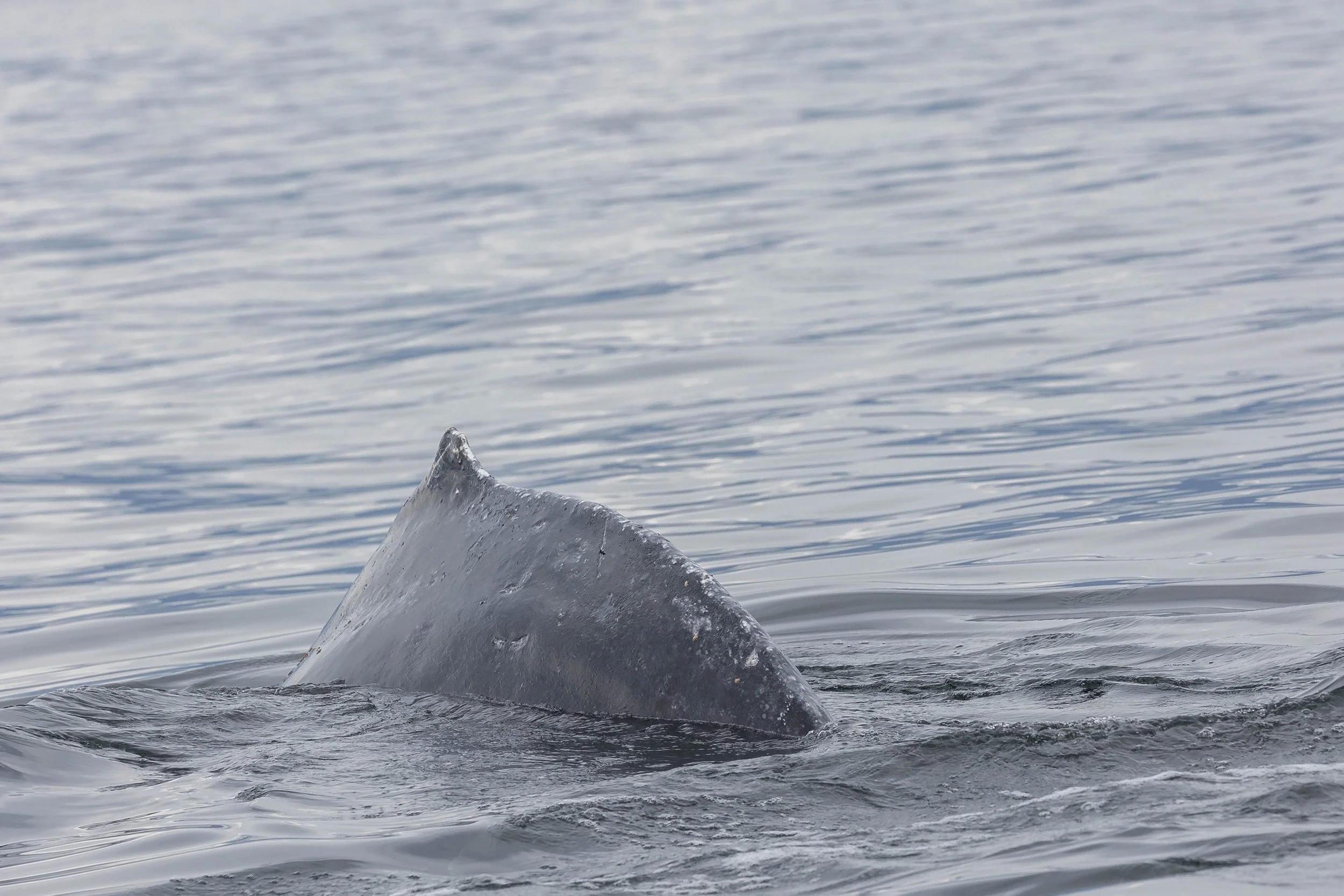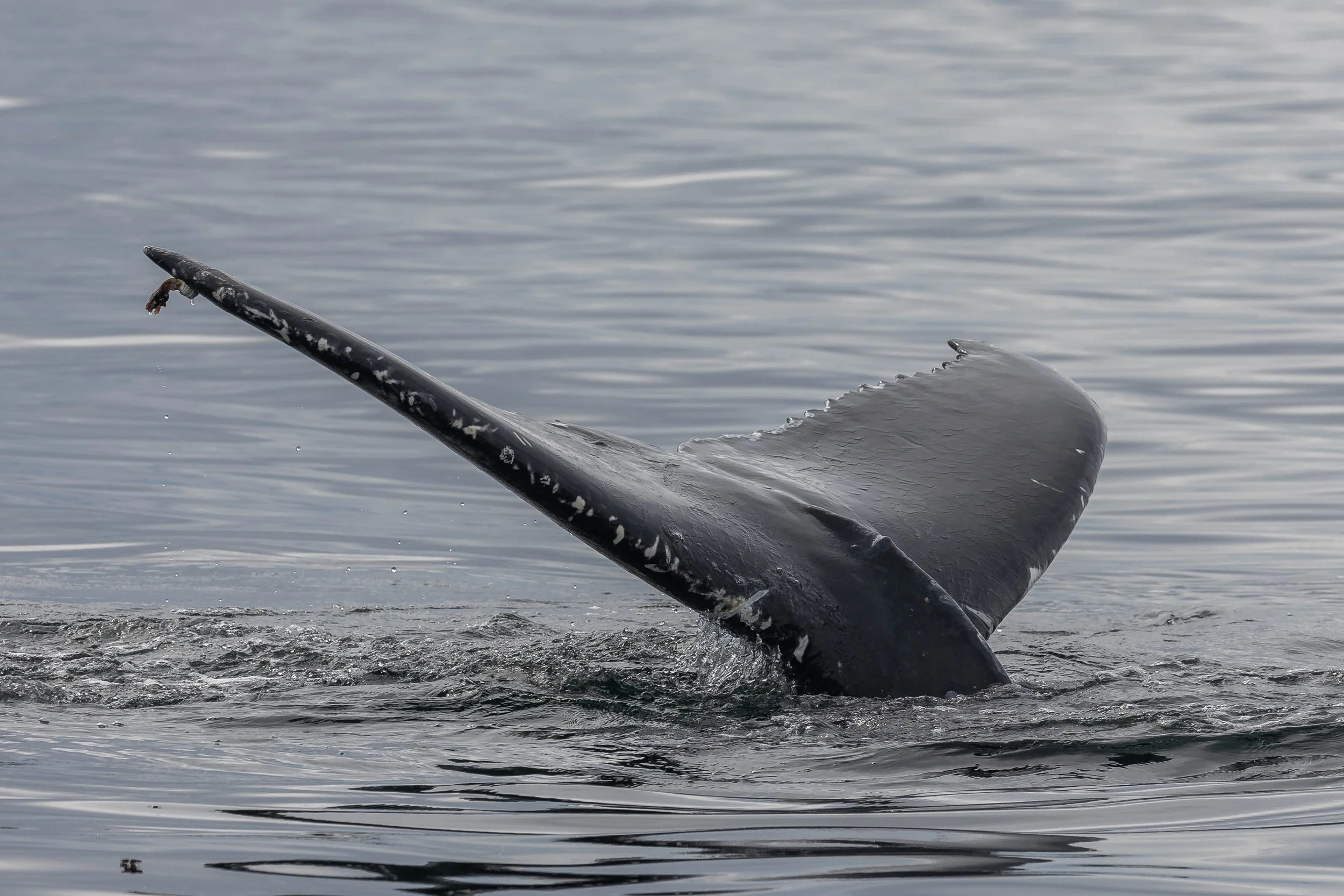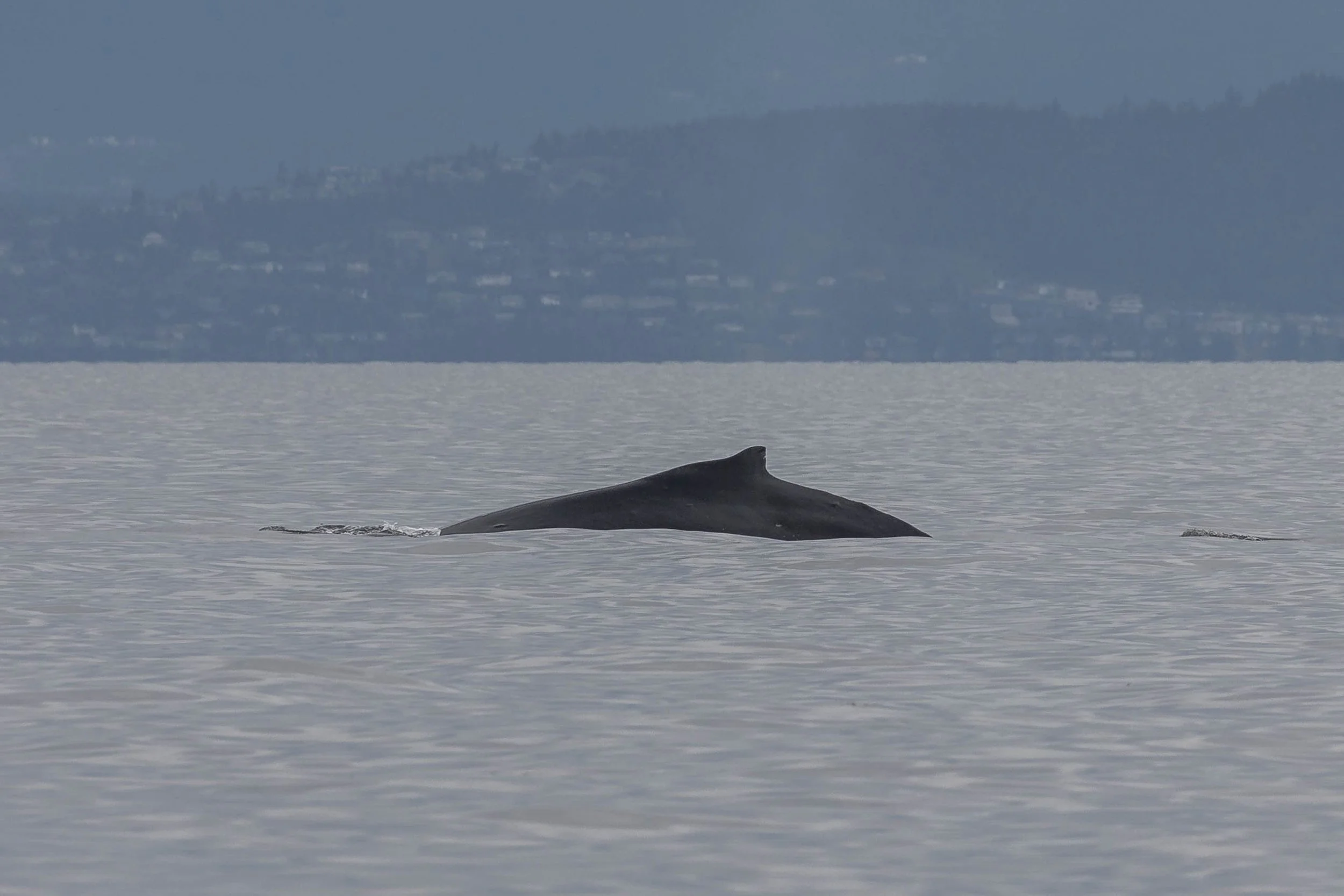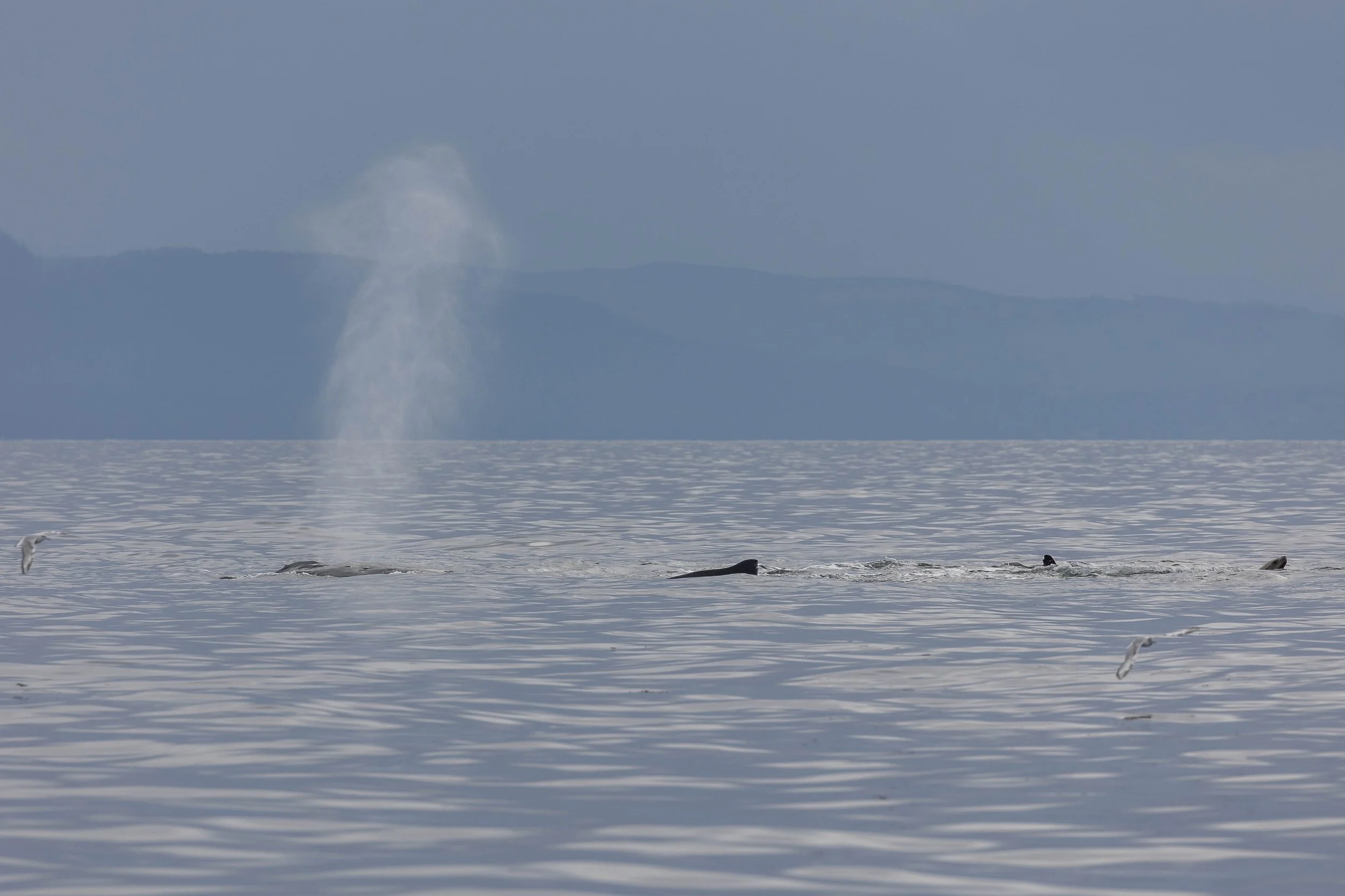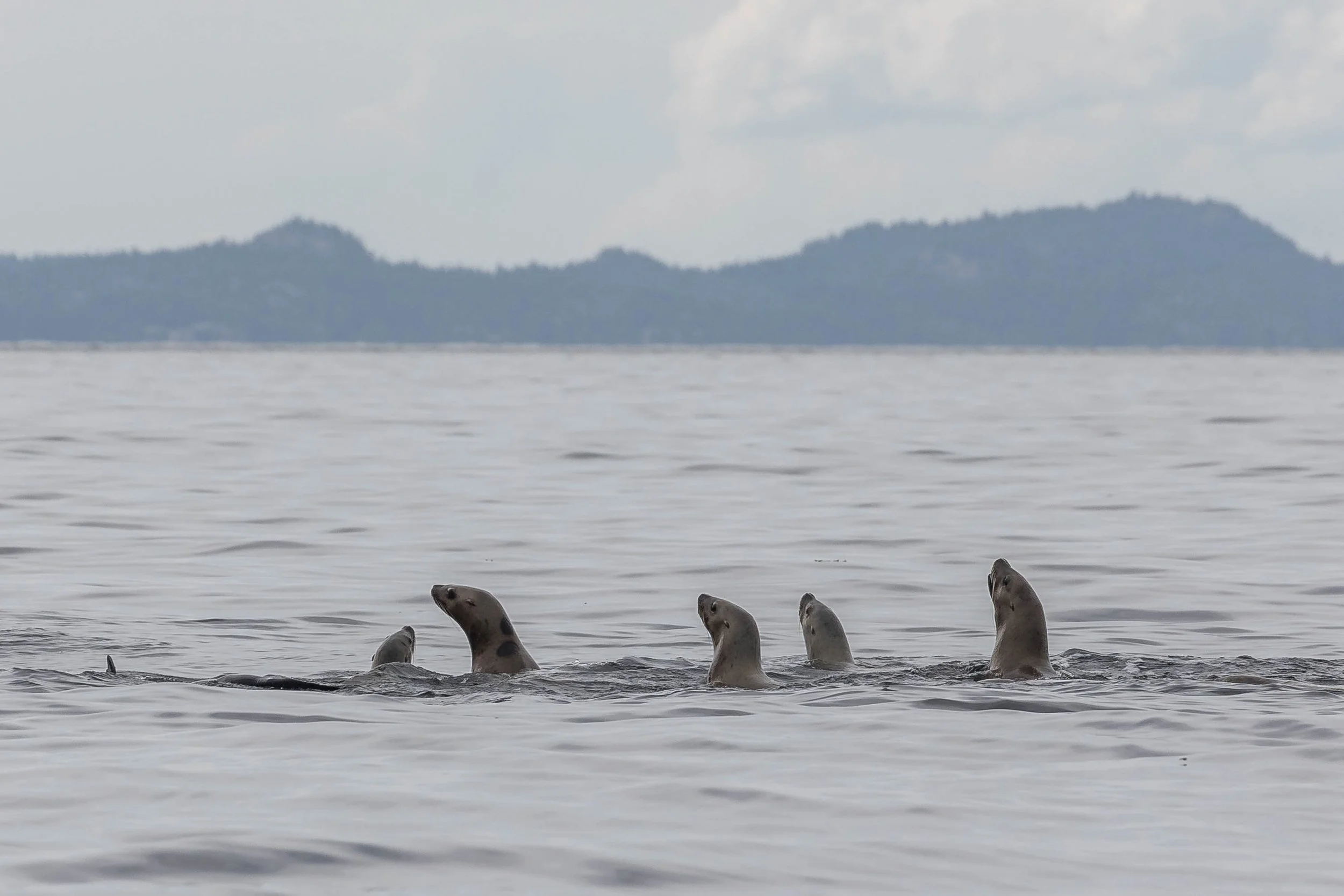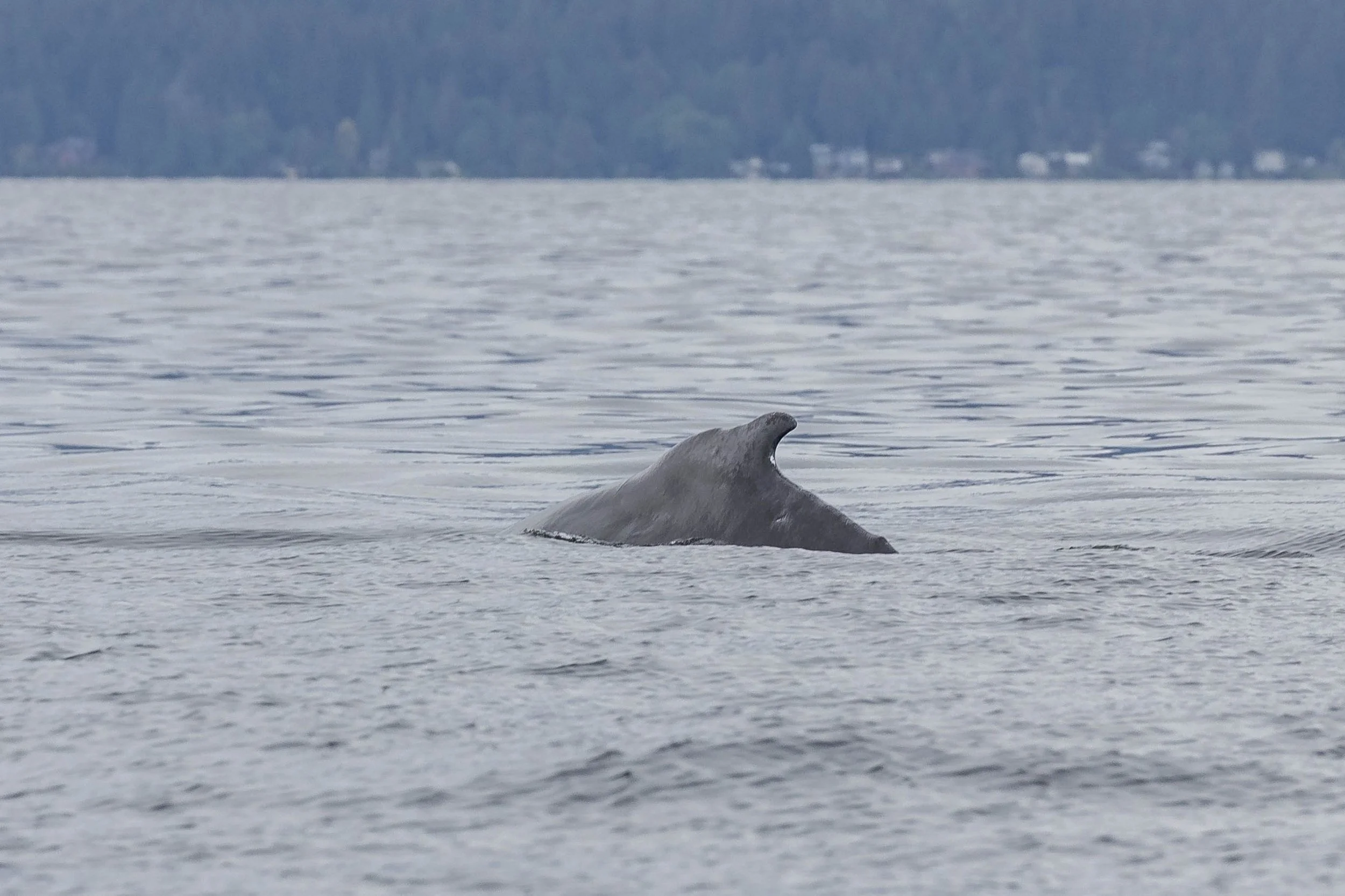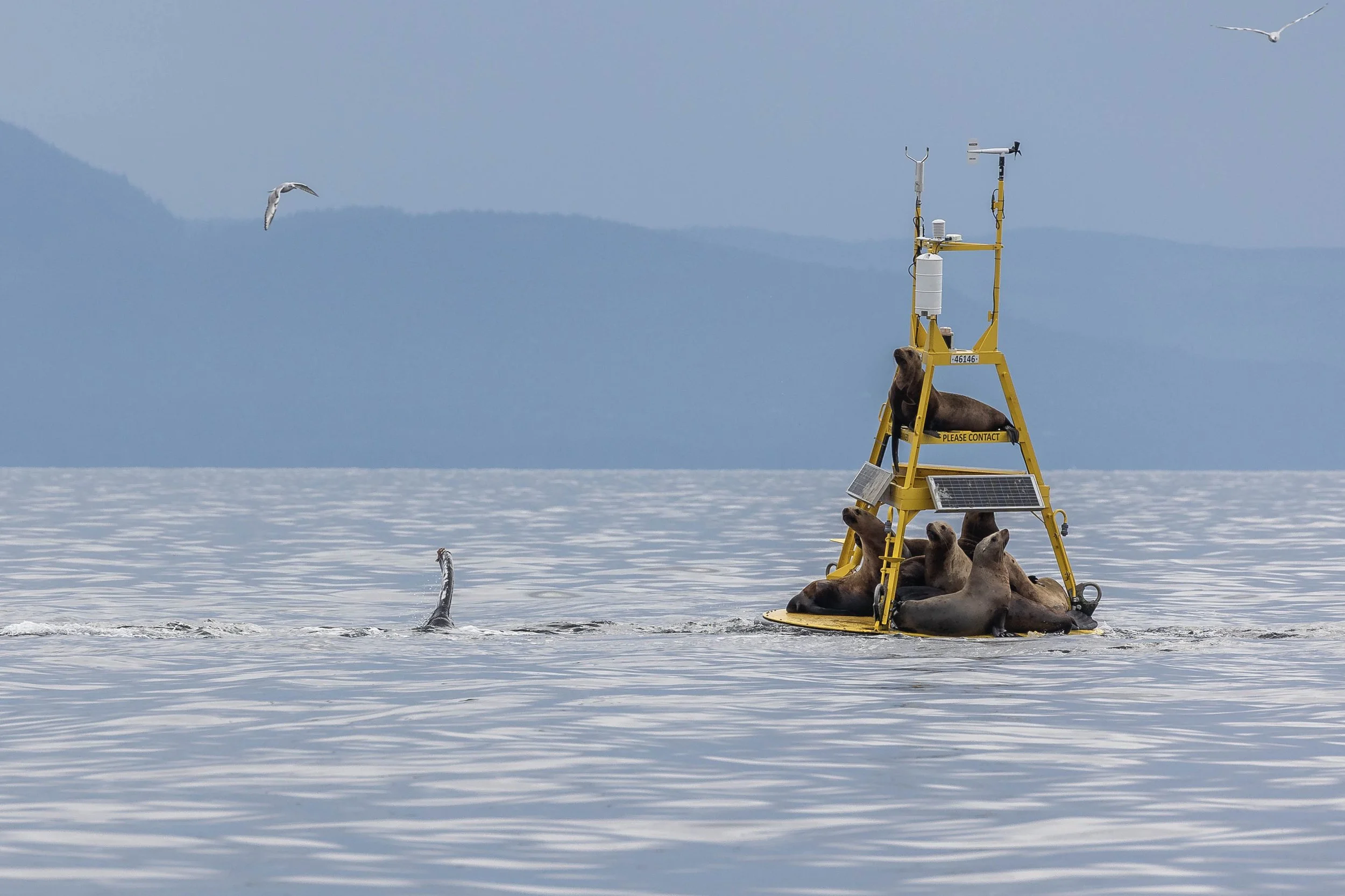May 11, 2025 - Noah and Jude still together, and a handful of Humpbacks!
It was another beautiful day as we left Nanaimo, heading south into the Southern Gulf Islands in search of whales for today. We had heard a rumour of a pair of orca that were seen from shore earlier in the day, so we decided to try our luck finding them. On the way, we did spot some little dorsal fins in the water, but it wasn’t orca! We had found some Pacific White-sided Dolphins! These small cetaceans are quite uncommon in our waters, more often found further north in the Strait, so we feel quite lucky whenever we can spot them on our tours. We searched all around the harbour for the orca, including searching the channels outside, before eventually giving up, deciding that the whales had evaded our detection. As if on cue, we finally saw the towering black dorsal fins of two orca break the surface of the water. We had found them! Grabbing the camera and snapping some photos, we quickly realized who we had. These two have been in the area a lot lately, and are easy to ID thanks to their unique dorsal fins. It was Noah and Jude!
T049A1 Noah ♂ (2001)
T049A2 Jude ♂ (2007)
These two brothers are slightly unusual, since they travel away from the rest of their pod. Typically, males will stick with their original matriline for their whole lives, although for whatever reason, these two have left their mother and siblings behind and typically travel as lone males. Noah will sometimes switch it up and hang out with their family, but Jude isn’t seen with the family as often. He does tend to travel with other orca, though, often other lone males. It makes sense, since orca are very social. Even though they might not want to be spending time with their home pod, they would still benefit from company, either from a social standpoint or from a hunting one.
Each orca needs to eat about 500 pounds of food each day to maintain their body mass, which can mean at least a few meals throughout the day. While we see lone animals being successful, most prey species can outmaneuver a lone whale, so they have one chance at stunning their prey and finishing them off, otherwise, they might get away. With another whale or whales present, it means they can coordinate their attack, and they will likely have higher success, especially if the first stunning attempt might not be successful. Could this be why these two have been spending time together? Or are they just enjoying some familiar company before going their separate ways? We can only speculate, but we know we love seeing the brothers travelling together, no matter the reason why!
After our time watching Noah and Jude was up, we continued travelling inside the islands, coming across a haul-out site for some Harbour Seals and Steller Sea Lions! These pinnipeds are sometimes found in close quarters, although they have a preference for different environments to spend their time. Part of this is due to their morphology, as the higher mobility of sea lions allows them to move on steeper slopes, and sometimes man-made objects like buoys (as we got to see later). The Harbour seals are restricted to shallow slopes since they aren’t as mobile on land.
After enjoying the pinnipeds on the rocks, we continued further into the Strait, searching along the way. Soon enough, we saw a big, bushy blow in the distance, we had found ourselves a humpback! We recognized this little whale as an unknown that we had seen earlier in the week, on May 9th, but this time it was alone. Typically, humpbacks are thought to be solitary animals, although more and more often we find them travelling in pairs or larger groups. While we got some great looks at this whale while it was feeding in the area, including a perfect tail photo, we still aren’t sure who they are. Given their small size and early return to our feeding grounds, it’s most likely that this whale is young, perhaps a calf from last year? If we do end up having any success in matching this whale as time goes on, we will be sure to update you here!
We enjoyed our time with this little mystery whale as they were feeding, blowing bubbles to likely confuse and capture their prey. The food must have been relatively close to the surface as well, as they weren’t gone for long after going for the typical deeper feeding dives. When the humpback first arrives in our waters, feeding is their main goal, since they have not only migrated nearly 6,000 km, but during their migration, the vast majority of their energy would have come from burning their fat reserves instead of from their current food. This yearly yo-yo diet happens for each humpback we see, as it’s never been proven that any humpback spends their winter here. Down south, where they go to breed and have their calves, there isn’t as much available food, so they will only feed opportunistically.
It seemed it wasn’t only this solo mystery whale feeding in the area, but we also managed to spot a pair of younger whales spending time together: Moraine (BCY1465) and Specter (BCX1333calf2023). These two also seemed to be feeding in the area, but they weren’t as gracious with their tails, but we got enough to confirm who it was we were seeing. There was tons of action here, with gulls and sea lions sharing the fishy feast with these humpbacks. It was quite the exciting sight! But all good things must come to an end, and time on the tour was running out, so we started the journey home.
Returning to the harbour, we were thrilled with how lucky we got to see all of this wildlife. The onboard Marine Naturalist Desarae Poier captured some amazing photos throughout the trip, which you can view below!
A pacific white sided dolphin!
A little closer look at the dolphins dorsal.
Can you spot the dolphin?
A Pigeon Guillemot cruising by.
T049A1 Noah in the Ladysmith Harbour.
T049A1 Noah with his brother T049A2 Jude following.
T049A1 Noah, what a tall fin.
T049A1 Noah with T049A2 Jude in tow.
T049A1 Noah.
T049A1 Noah behind T049A2 Jude.
Harbour seals relaxing in the water.
Harlequin ducks and a harbour seal peeking out of the water.
Steller Sea Lions rolling in the waves.
A row of cuddles from these Stellers.
Our unknown humpback surfacing.
The other side of our unknowns dorsal fin.
The underside of the mystery whale.
The front of their tail.
Our unknown swimming away.
A good look at the blowholes.
Arching for a dive.
The mystery humpback surfacing.
Can you spot both the acorn and goose neck barnacles on their tail?
Specter’s dorsal fin.
Can you spot the humpbacks feeding alongside the sea lions?
A raft of Steller Sea Lions.
Moraine’s hooked dorsal fin.
Can you spot the pectoral fin as Moraine approaches the sea lions?
Moraine being silly, doesn’t seem to want to share food with these sea lions.
Moraine harassing the sea lions!

